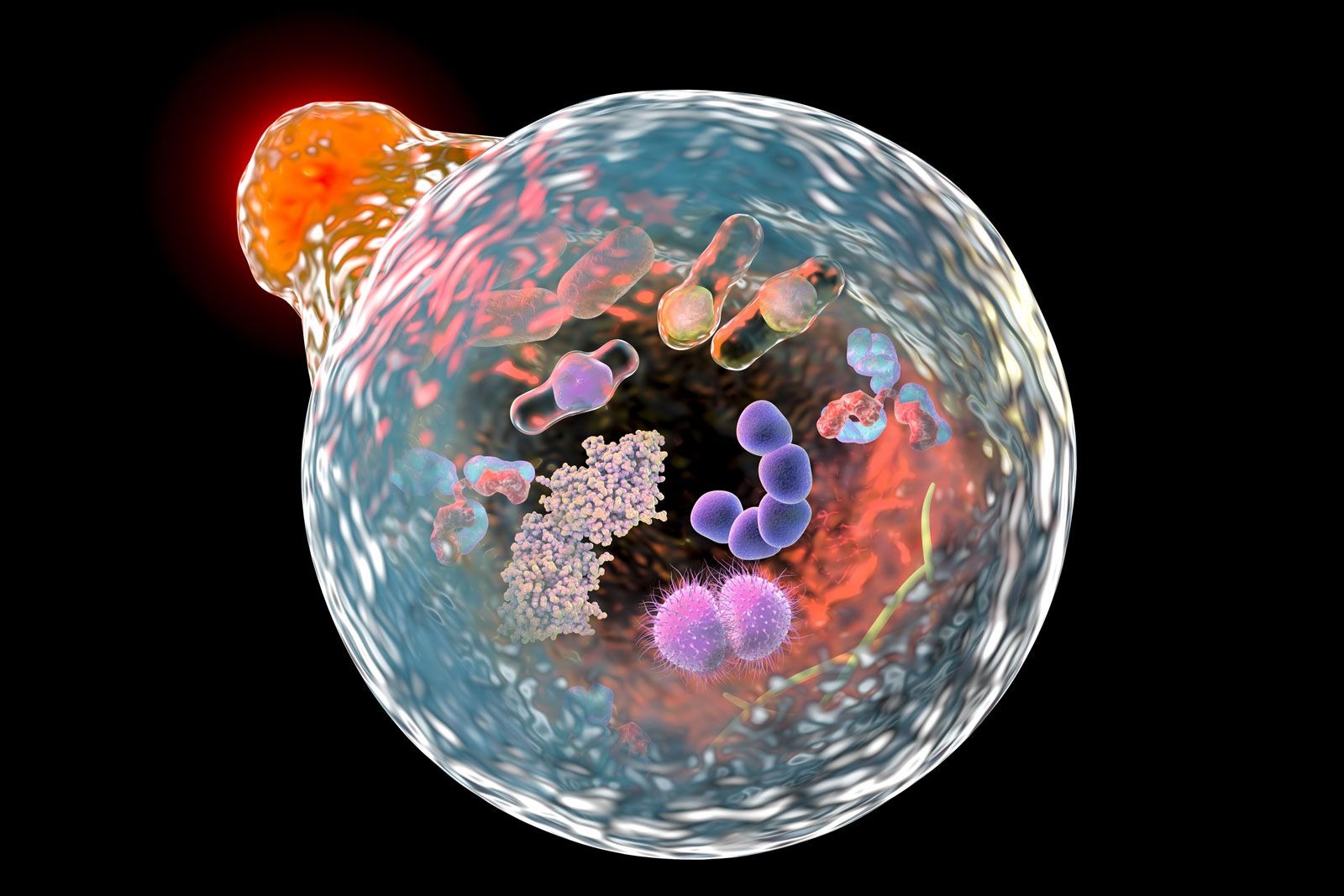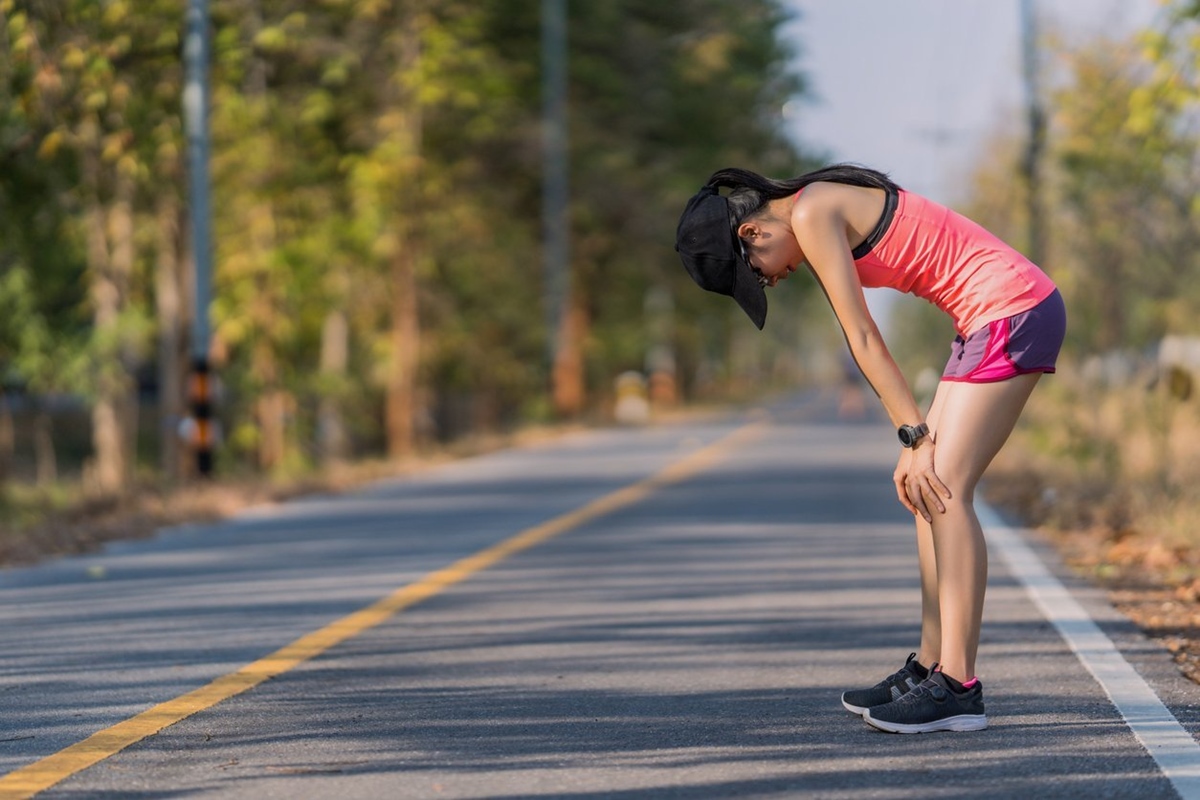Home>Misc>Featured>How Is Fitness Determined In The Biological Sense


Featured
How Is Fitness Determined In The Biological Sense
Modified: August 18, 2023
Discover how fitness is determined in the biological sense with our featured article. Gain insights into the factors that contribute to overall fitness levels.
Introduction
Fitness is a concept that encompasses various aspects and holds different meanings depending on the context in which it is discussed. In the biological sense, fitness refers to an organism’s ability to survive and reproduce in its specific environment. It is a measure of how well an organism is adapted to its surroundings and how successful it is in passing on its genetic traits to the next generation.
Biological fitness is not solely determined by physical strength or appearance but relies on a combination of genetic factors, environmental influences, and reproductive success. Understanding the complex interplay between these factors is crucial to comprehending how fitness is determined.
In this article, we will explore the different components that contribute to an organism’s fitness in the biological sense. We will discuss genetics and how it influences fitness, the role of physical traits and adaptations, the impact of environmental factors, and the connection between reproduction and fitness.
By gaining insights into the multifaceted nature of fitness, we can gain a deeper understanding of how organisms adapt and thrive in their environments and appreciate the intricate mechanisms that drive evolutionary processes.
Definition of Fitness
Fitness, in the biological sense, refers to an organism’s ability to survive and reproduce in its specific environment. It encompasses various traits, behaviors, and adaptations that enable an organism to thrive in its surroundings and pass on its genetic material to future generations.
When we talk about fitness, we are not just referring to physical strength or appearance. It goes beyond superficial attributes and delves into the underlying genetic and adaptive characteristics that contribute to an organism’s success in its environment.
In evolutionary terms, fitness is often measured by an organism’s reproductive success. The more offspring an organism produces, and the more of those offspring that survive and reproduce themselves, the higher its fitness level.
It’s important to note that fitness is relative and context-dependent. What may be considered fit in one environment may not necessarily be the case in another. Organisms must be well-suited to their specific ecological niche and possess traits and adaptations that enhance their chances of survival and reproduction in that particular habitat.
Furthermore, fitness is not a static concept but rather a dynamic process. It is a result of ongoing interactions between an organism’s genetic makeup and the environment it exists in. As environments change or new challenges arise, organisms must adapt and evolve to maintain their fitness.
Overall, the definition of fitness in the biological sense encompasses the ability of an organism to survive, reproduce, and pass on its genetic material to future generations. It involves a wide range of traits, behaviors, and adaptations that enable an organism to thrive in its specific environment. By understanding the concept of fitness, we can gain insights into the intricate mechanisms that drive evolutionary processes.
Genetics and Fitness
Genetics plays a fundamental role in determining an organism’s fitness. The genetic makeup of an individual influences its physical traits, behavior, and physiological functions, all of which contribute to its overall fitness.
Through the process of natural selection, individuals with advantageous genetic variations have a higher likelihood of survival and reproductive success. These advantageous traits can be inherited and passed on to future generations, leading to increased fitness in subsequent populations.
One example of genetic influence on fitness is the ability to tolerate specific environmental conditions. Some organisms possess genetic variations that allow them to withstand extreme temperatures, resist diseases, or efficiently process certain nutrients. These genetic adaptations enhance an organism’s fitness by increasing its chances of survival and successful reproduction in particular habitats.
Genetic diversity within a population is also crucial for maintaining overall fitness. It provides the variation necessary for adaptation to changing environments and the ability to overcome new challenges. Reduced genetic diversity can limit an organism’s ability to respond to environmental pressures, making it more vulnerable to extinction.
Furthermore, genetics plays a role in determining the potential for physical fitness. Certain genetic factors can influence an individual’s ability to build strength, endurance, and flexibility, which are all vital for physical performance. However, it’s important to note that genetics is not the sole determinant of physical fitness, as environmental factors and lifestyle choices also play significant roles.
Overall, genetics significantly contributes to an organism’s fitness by influencing its physical traits, adaptations, and ability to respond to environmental challenges. It underpins the process of natural selection and plays a crucial role in the evolution and survival of species.
Physical Traits and Fitness
Physical traits are essential components of an organism’s fitness as they directly impact its ability to survive and reproduce in its environment. These traits encompass a wide range of characteristics, including body structure, sensory abilities, locomotion, and specialized adaptations.
Physical traits are shaped by genetic factors and environmental influences. Natural selection acts upon these traits, favoring those that improve an organism’s chances of survival and reproductive success in its specific ecological niche. Let’s explore some key physical traits and their relationship to fitness:
- Body Size and Shape: The size and shape of an organism’s body can significantly influence its fitness. Larger body size may provide advantages such as increased strength, better heat retention, or the ability to intimidate competitors. Alternatively, smaller body size can offer benefits like agility, energy efficiency, and access to food resources in narrow ecological niches.
- Sensory Abilities: Sensory traits, such as keen eyesight, acute hearing, or a well-developed sense of smell, can enhance an organism’s ability to perceive and respond to its environment. This heightened sensory perception can aid in detecting predators, finding food sources, or locating mates, ultimately improving fitness.
- Locomotion: The ability to move efficiently and effectively in a habitat is crucial for survival and reproductive success. Different organisms have evolved various locomotion strategies, such as walking, swimming, flying, or burrowing, depending on their specific ecological requirements. Locomotor traits allow organisms to navigate their environment, acquire resources, and escape from predators, thereby contributing to their overall fitness.
- Specialized Adaptations: Many organisms possess specialized adaptations that are highly advantageous in their specific habitats. Examples include camouflage, venomous bites, protective armor, or specialized appendages for capturing prey. These adaptations improve survival rates, increase access to resources, and enhance reproductive opportunities, ultimately driving fitness.
It is important to note that physical traits alone do not determine fitness. Environmental factors and interactions with other organisms also play critical roles. Moreover, the fitness landscape is dynamic, and physical traits that initially confer an advantage may become less beneficial as environmental conditions change.
Overall, physical traits are crucial components of an organism’s fitness. They are shaped by genetic factors, influence survival and reproductive success, and allow organisms to thrive in their specific environment. By understanding the relationship between physical traits and fitness, we can gain insights into the remarkable adaptations that have evolved over time.
Adaptations for Fitness
Adaptations are essential mechanisms that organisms develop to enhance their fitness in response to environmental pressures. These adaptive traits allow organisms to better survive, reproduce, and successfully pass on their genetic material to future generations.
Adaptations can manifest in various forms, including physical, physiological, behavioral, and biochemical traits. Let’s explore some examples of adaptations and how they contribute to fitness:
- Structural Adaptations: Many organisms possess physical structures that are specifically adapted to their ecological niche. For example, the long neck of a giraffe allows it to reach high foliage for food, while the streamlined body of a fish enables efficient swimming. Such structural adaptations improve an organism’s chances of obtaining resources, avoiding predators, and finding mates, ultimately enhancing fitness.
- Physiological Adaptations: Organisms also develop physiological adaptations to cope with various environmental challenges. For instance, desert-dwelling animals have evolved efficient water-conservation mechanisms, such as concentrated urine, to survive in arid conditions. These physiological adaptations enable organisms to thrive in otherwise inhospitable environments, improving their overall fitness.
- Behavioral Adaptations: Behavioral traits can greatly impact an organism’s fitness. For example, the migration of certain bird species to breeding grounds with abundant resources ensures optimal conditions for raising offspring. Social behavior, such as cooperative hunting in wolf packs or hive construction in bees, maximizes reproductive success and enhances overall fitness.
- Biochemical Adaptations: Biochemical adaptations involve molecular-level changes that allow organisms to withstand specific environmental conditions. Examples include the production of antifreeze proteins by certain fish species living in icy waters or the development of enzymes that aid digestion of otherwise toxic substances. These biochemical adaptations enable organisms to thrive in extreme environments, improving their fitness.
Adaptations are not fixed traits but instead arise through the process of natural selection. Individuals with beneficial adaptations have higher fitness, as their traits provide advantages for survival and reproduction. Over time, these advantageous traits become more common in a population, leading to evolutionary change.
It’s important to note that adaptations are not always perfect or permanent. They are a result of a trade-off between different selective pressures and are continuously refined through the ongoing process of evolutionary change.
By studying adaptations, we gain insights into the remarkable capacity of organisms to modify their traits and behaviors to meet the challenges of their environment. It highlights the dynamic nature of life and showcases the incredible diversity and complexity of the natural world.
Environmental Factors and Fitness
Environmental factors play a critical role in determining an organism’s fitness. The environment encompasses the physical and biological conditions in which an organism exists, including factors such as temperature, rainfall, availability of resources, predation pressures, and competition.
The interaction between organisms and their environment drives the process of natural selection, favoring individuals with traits that are well-suited to their specific ecological niche. Let’s explore some key environmental factors and their influence on fitness:
- Resource Availability: The availability of essential resources, such as food, water, shelter, and mates, directly affects an organism’s fitness. Access to abundant resources increases an organism’s chances of survival, growth, and reproduction. Conversely, resource scarcity can limit an organism’s fitness and survival.
- Predation and Competition: The presence of predators and competitors exerts selective pressures on organisms. Individuals that possess traits that help them avoid predators or outcompete others for limited resources have higher fitness. These traits can include camouflage, defensive mechanisms, or superior foraging abilities.
- Environmental Conditions: Physical factors such as temperature, humidity, light levels, and pH can significantly impact an organism’s fitness. Some organisms have developed physiological adaptations, such as the ability to tolerate extreme temperatures or survive in low-oxygen environments, which allow them to thrive in challenging conditions.
- Habitat Stability: The stability of the habitat in which an organism resides can affect its fitness. A stable environment provides a predictable availability of resources and reduced environmental stressors, promoting higher fitness. Conversely, habitats that undergo frequent disturbances or drastic changes may pose challenges to organisms’ fitness and survival.
It’s important to note that environmental factors are not static, and they can change over time. This dynamic nature of the environment drives evolutionary processes as organisms either adapt to new conditions or face the risk of extinction.
Furthermore, environmental factors can interact with genetic factors to shape an organism’s fitness. The same environmental factor may have different effects on fitness depending on an organism’s genetic makeup and its ability to respond to those environmental cues.
By studying the influence of environmental factors on fitness, we gain a deeper understanding of how organisms adapt and evolve in response to the challenges and opportunities presented by their environment. It emphasizes the intricate relationship between organisms and their surroundings and highlights the interconnectedness of life on Earth.
Reproduction and Fitness
Reproduction plays a fundamental role in determining an organism’s fitness. The ability to successfully reproduce and pass on genetic material to the next generation is a key factor in evolutionary processes.
Organisms with higher reproductive success have greater fitness as they can leave behind more offspring, increasing the chances of their genes being represented in future populations. Let’s explore the relationship between reproduction and fitness:
- Number of Offspring: Producing a larger number of offspring can increase an organism’s fitness. However, the optimal number of offspring varies depending on the species and ecological context. For some organisms, producing numerous offspring with low parental investment increases the likelihood that some will survive and reproduce. In contrast, other organisms may invest more time and resources in a smaller number of offspring to ensure their survival and reproductive success.
- Parental Care: Parental care, such as providing protection, food, or teaching behaviors, can greatly enhance an organism’s fitness. Offspring that receive parental care have better chances of survival and successful reproduction. Parental care also allows for the transfer of valuable information and skills, increasing the long-term fitness of offspring.
- Reproductive Strategies: Different organisms employ various reproductive strategies to enhance fitness. This can include strategies such as mate competition, mate choice, or cooperative breeding. The specific reproductive strategies employed by a species depend on factors such as social structure, mating systems, and resource availability.
- Genetic Variation: Genetic diversity within a population is critical for maintaining overall fitness. Higher genetic variation provides a greater pool of potential adaptations and facilitates the ability to respond to changing environments. Inbreeding and reducing genetic diversity can have detrimental effects on fitness, as it increases the risk of genetic disorders and reduces adaptive potential.
It’s important to note that reproductive success is not solely determined by the number of offspring produced. The survival and reproductive success of offspring are equally crucial. Traits that improve offspring survival, such as disease resistance, competitive abilities, or effective parenting skills, are selected for and contribute to an organism’s fitness.
Furthermore, reproductive fitness can be influenced by various factors, including environmental conditions, mate availability, and reproductive competition. The interplay between genetic factors and the environment shapes reproductive strategies and influences an organism’s fitness.
By understanding the relationship between reproduction and fitness, we gain insights into the complex mechanisms that drive evolutionary processes. It highlights the importance of successful reproduction in shaping the genetic makeup of populations and underscores the significance of parental investment and reproductive strategies for an organism’s fitness.
Conclusion
Fitness in the biological sense encompasses an organism’s ability to survive and reproduce in its environment. It is a multifaceted concept that is influenced by genetics, physical traits, adaptations, environmental factors, and reproductive success.
Genetics plays an essential role in determining an organism’s fitness, as it influences physical traits, adaptations, and capacity for evolutionary change. Physical traits, including body size and shape, sensory abilities, locomotion, and specialized adaptations, directly impact an organism’s ability to survive and reproduce.
Adaptations are crucial mechanisms that organisms develop to enhance their fitness. These adaptations can be structural, physiological, behavioral, or biochemical and allow organisms to thrive in their specific ecological niches.
Environmental factors also significantly influence an organism’s fitness. Factors such as resource availability, predation pressures, competition, and habitat stability play vital roles in shaping an organism’s survival and reproductive success.
Reproduction is a fundamental aspect of fitness, as it allows organisms to pass on their genetic material to future generations. The number of offspring produced, parental care, reproductive strategies, and genetic variation all contribute to an organism’s reproductive success and overall fitness.
In conclusion, fitness in the biological sense is not solely determined by physical traits or genetic factors. It is a complex interplay of genetic variations, adaptations, environmental factors, and reproductive success. Understanding the mechanisms that determine fitness provides insights into the incredible diversity and adaptability of life on Earth.







